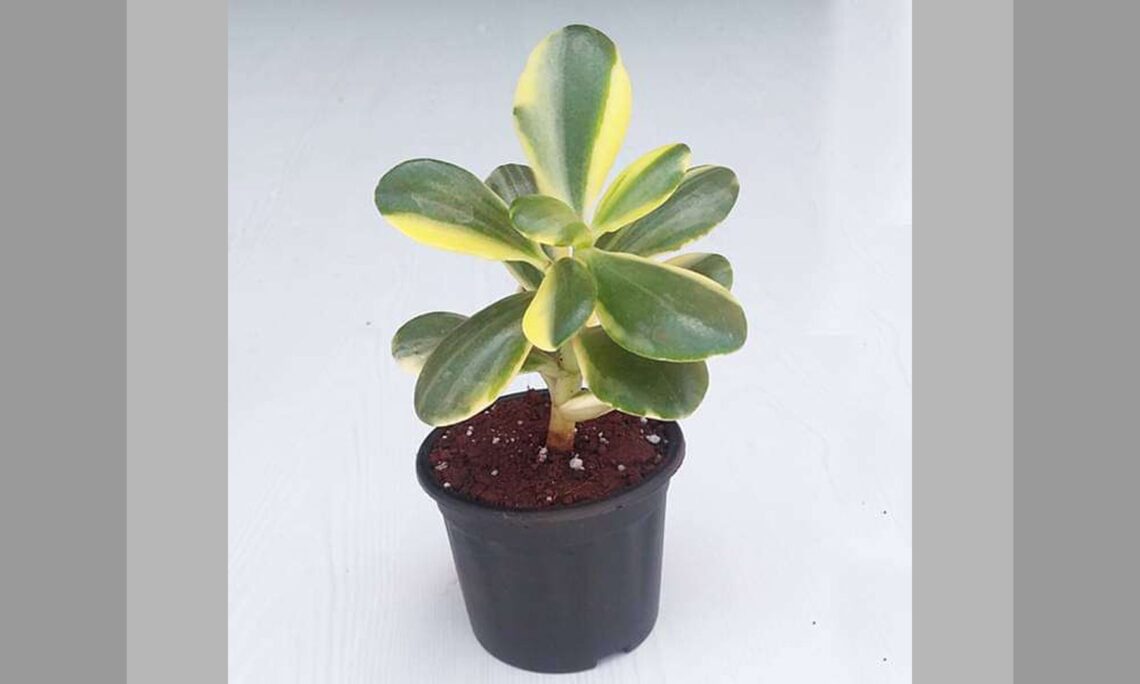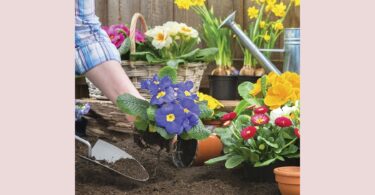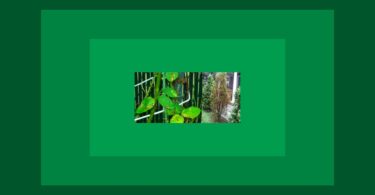Radko Tichavsky is a Czech born Mexican Agrohomeopath. He is a co-founder and director of Instituto Comenius in Mexico and author of Handbook of Agrohomeopathy, 2007 (Spanish) and Homeopathy for Plants, 2009 (Spanish), Organon de la Holohomeopatía and creator and teacher of Holohomeopathy.
He is now offering a one-semester virtual course in Holohomeopathy (in English). You can learn how to define and analyze holons and how to repertorize the specific homeopathic treatment beyond just disease or pest names. You can find out more here: www.icomenius.edu.mx
Many readers asked about Radko Tichavsky’s books. Below is a photo of them. They are available Spanish, Italian and Portuguese. For ordering or information: [email protected]

Editor’s Note: JT (Jenichen/Tichavsky) potency is often mentioned below. It is a centesimal dilution followed by 500 succussions or five hundred continuous turns with a wooden stick to the right and 500 turns to the left (if handling larger volume). The JT potency frequently has a better reaction in plants and it is very important in preparation of live bionosodes.
Dear Radko,
After struggling with weeds and parasites when planting vegetables, I’m thinking of growing spinach and other plants indoors hydroponically. Are there any disadvantages of growing vegetables hydroponically? Are they nutritionally the same?
Thank you
Calvin
Radko Tichavsky:
Dear Calvin,
Plants to have a correct development and beneficial nutritional properties for the body require a living soil, i.e. soil containing bacteria, fungi, ciliates, nematodes, worms, all of them producing enzymes, hormones and nutrients, vitamins and trace elements in plants, necessary for the healthy development of humans.
Hydroponic crops have been introduced in modern times in Holland as an option to the devastation of agricultural soils, but you should know that generally hydroponic crops base plant nutrition on chemical synthesis products.
Even if we think of some hydroponic crops erroneously called organic, which sometimes combine fish farming whose excrements serve to nourish the plants, some of them are even certified by unscrupulous certifying companies as organic, it must be said that their nutritional quality is not comparable with an organic crop in soil and even less with a holohomeopathic crop. I am sorry to disappoint you but I prefer to be honest and tell the truth, the best is to produce spinach or any other plant in a compost soil.
Hello Mr. Tichavsky,
My neighbour’s plot is overrun with bindweed. It has sneaked deep under the adjoining path and into my two compost heaps from below. I have painstakingly dug it out of both heaps but I always miss bits which then get spread all over my plot when I use the compost. Is there anything you can suggest to stop it from spreading?
Thanks
Dodo Kitching – Registered homeopath -London
Radko Tichavsky:
Dear Dodo,
The bindweed (Convolvulus arvense) responds to disturbed soils (with continuous inversion of the soil strata) and with excess nitrogen. Convolvulus arvense is also the bioindicator plant for the application of glyphosate in the holon, as it is resistant to it.
Convolvulus sp. seeds can remain active and ready to germinate for more than 30 years and the plant’s root system can reach up to 9 meters deep, making it difficult to control. In your case the deep roots of C. arvense went under the fence and emerged in your compost.
The first suggestion is not to use the compost directly to spread it on your garden but to make a compost-tea. That is, put about 20 liters of compost in a cloth sack and suspend it in 200 liters of water. In this way you will elaborate the teacomposta and with it you will irrigate your crops without the danger of spreading pieces of roots or seeds of the bindweed.
In order to develop a remedy to inhibit the germination of bindweed seeds and roots, it is necessary to further analyze the enzymatic activity of the plant, which primarily displays the activity of α- and β-galactosidase, α- and β-glucosidase, and α- and β-mannosidase, all of which are hydrolases related to the availability of different types of sugars, in addition to enzymes such as acid invertase and acid phosphatase (this availability of phosphorus to the plant).
The plant Ludwigia octovalvis (belonging to the family Onagraceae and present practically all over the American continent). It contains many enzymatic inhibitors as well as the marine sponge Aka coralliphaga (which grows in Cuban waters).
In this case dynamizations are applied from the TM in Methylalcohol in potency 4 JT. The organisms associated with Convolvulus arvensis are produced by bacteria and fungi such as Yersinia ruckeri (Gammaproteobacteria), Corynebacterium minutissimum (Actinobacteria), Burgholderia pseudomallei (Betaproteobacteria) Klebsiella sp. (Gammaproteobacteria) Aspergillus flavus, Aspergillus niger, Aspergillus reperii, Aspergillus fumigatus, Aspergillus terreus, Trichoderma sp., Drechslera biseptata and Drechslera australiensis (Ascomycota, Pleosporales).
Enzymes have the function of accelerating the lysis functions of different organic substances to provide plants and living organisms with nutrients. Convolvulus devoid of its enzyme activity decreases its growth by 10 000 000:1, i.e. without its enzymes it turns from a prolific reproducing plant into a vulnerable plant with extremely slow reproduction and growth.
The inhibitors of these microorganisms are produced mainly by bacteria belonging in 60% to the phylum Firmicutes, and to a lesser degree belonging to the phyllum Actinobacteria, Proteobacteria and Bacteroidetes.
They are present in Atractylis gummifera (a plant belonging to the Asteraceae family very common in the Mediterranean region), which contains potent inhibitors of the microbiota associated with Convolvulus arvensis and also consequently decreases its enzymatic activity.
The remedies of these two plants or the sea sponge are used in low potency (6 JT) to inhibit the growth of bindweed.
Bacillus in general produce many C. arvense enzyme inhibiting substances, especially Bacillus spp. present in marine organisms such as marine sponges.
Each of the inhibited bacteria is produced in association with different plants from which they can be extracted and prepared homeopathically in the form of live bionosode: Bacillus megaterium and Bacillus subtilis (present in Aloe vera) is one of them, Bacillus pumilus, (in Tradescantia spathacea or Aloe vera) Bacillus aryabhattai ( in root system of Erigenon canadensis, Salvia mitiorhiza or Prunus amygdalus), Bacillus methylotrophicus (in the roots of Prunus amygdalus), Bacillus flexus (in Tradescanthia spathacea, or in Ricinus communis), Bacillus stratosphericus (in Prunus amygdalus).
In this case it is necessary to prepare a live bionosode (all prepared in non-chlorinated water with a little carbonated water) dynamize it to 3 JT potency and apply four times one week apart when the temperature is above 20 degrees Celsius.
In England it may be easier to obtain Erigenon canadensis (roots), Tradescanthia spathacea (plant sap) and Aloe vera (prepared from the gel of the leaves).
Another remedy that may help is to scatter some salt water in the vicinity of the fence with your neighbor as Convolvulus arvense is relatively sensitive to salinity which decreases its vigor quite a bit.
In this way the plant will stop invading compost although the possibility of seed dispersal by bird droppings will remain, but with a little patience the problem will gradually subside.
Hi Dr. Tichavsky,
Our Mango tree has stunted growth and the leaves have yellow dots. It may be powdery mildew, or anthracnose (picture below). I am from Kerala, India. It has a humid tropical climate. Kerala gets an average annual rainfall of 3107 mm. 120–140 rainy days per year. The tree gets lots of sunshine.
Also, our Musa plant has rhizome weevil that makes the stem unhealthy.

Thank you
Mia
Radko Tichavsky:
Dear Mia,
The fungus causing anthracnose comes in two forms: Colletotrichum gloeosporioides (anamorphic, asexual or imperfect stage) or Glomerella cingulata (sexual or perfect teleomorphic stage). The anthracnose-causing fungus is a fungus in conjunction with other pathogenic fungi Sclerotinia sclerotiorum, Botrytis cinerea, Botrysphaeria obtusa, or Neonectria gallina form cluster.papaya among many susceptible plants.
Although in less humid climates Trichoderma hazrzianum could be used to control the complex of fungi associated with C. gloeosporioides, in your conditions it could attract wood-decaying fungi such as Schyzophyllum commune to your trees.
In this case the best defense are bacteria belonging to the phylum Firmicutes for example Bacillus subtilis. This bacterium prepared in bionosode vivo at potency 4 JT should be activated by means of Calcarea carbonica at potency 6 CH. Bacillus subtilis together with Bacillus megaterium, also important to inhibit pathogenic fungi in mango, are found in gel of Aloe vera leaves.
Mix the gel of two Aloe vera leaves in a liter of water and grind it in a liter of non-chlorinated water in a blender. Then cook some brown rice in a liter of water until the rice is completely dissolved in the water forming a kind of creamy soup.
Add this liter of cooked rice in 100 liters of non-chlorinated water together with the liquefied Aloe vera leaf gel and make 500 vigorous turns with a wooden stick to the right and 500 turns to the left, leaving it to mature for two days. Then dissolve 2 liters of this ferment in 18 liters of water and sprinkle it on the leaves of the diseased trees. The application should be repeated once a week for a month.
As far as rhizome weevil or Banana root borer (Cosmopolites sordidus) is concerned, it can be easily controlled with Beauveria bassiana, an entomopathogenic fungus that you can buy on the internet.
To make traps for the adults you can wound some leaves of Eucalyptus sp. in soybean oil and add a glass of apple cider vinegar. Place it in plastic bottles buried at ground level around the infested places.
As for homeopathic remedies to control larvae and adults we use Larrea tridentata, Piper guineense, Nicotiana tabacum, Nicotiana glauca, Allium sativum, Azadirachta indica, Sysygium aromaticum, Cymbopogon citratus,, Myristica fragans, Zingiber officinale, Curcuma longa, Phytolacca spp. and Tephoresia spp.. The remedies are applied sprayed on the plants and on the soil at 3 JT potency. You can even plant Cymbopogon citratus, Cymbopogon nardus and Calendula officinalis among the banana plants.
Dr. Tichavsky,
Many of our apples developed Blossom End Rot? We had put so much work into these, so it was very disappointing. We live in Little Rock Arkansas (U.S.) Zipcode 72205. Climate: Summer High: the July high is around 92 F degrees.
The January low is 31F. Rain averages 51 inches a year. Snow – 4 inches a year.
Is there anything we can do to prevent this next season?
Thank you
Clara
Radko Tichavksy:
Dear Clara,
The blossom end rot is caused by complex fungi (Sclerotinia sclerotiorum, Botrytis cinerea, Botrysphaeria obtusa, Botrytis cinerea, Neonectria galligena and other opportunistic fungi).
Sclerotinia sclerotiorum and some other pathogenic fungi require oxalic acid for their pathogenicity, then bacteria producing oxalate oxidase, i.e. enzyme that decomposes oxalic acid into carbon dioxide and hydrogen peroxide, such as Bacillus subtilis, Bacillus cereus, Bacillus polymixa, or Pantoea agglomerates have the ability to rapidly eliminate the condition.
Also it triggers lipid peroxide and salicylic acid synthesis which are the biochemical substances with the ability to develop systemic resistance to Sclerotinia sp. complex in mango trees.
You can apply live Aloe vera bionosode, with Opuntia ficus indica sap as adjuvant (which can be substituted with Plantago ovata seed hydrate or Salvia sp. seed hydrolat if Opuntia sp. is not available).
Apply at 4 JT potency by spraying on the soil and on leaves and fruits. Normally the problem is corrected with five applications spaced one week apart.
Hello Mr. Tichavsky,
Squash bugs are destroying my squash crop. It wasn’t a problem the last few years, but they just took over this time. We’re in Long Beach California (zip 90715). Temperatures vary from 48°F to 82°F and are rarely below 42°F or above 91°F. We only get 14 inches of rain a year. Crops have to be watered. How do we deter these little beasties?
Thank you
Craig
Radko Tichavsky:
Dear Craig,
Anasa tristis, is a devastating plant pest of the Cucurbitaceae family, and it is difficult to manage. They collaborate with beta proteobacterias (Caballeronia spp., Paraburgholderia spp. and Burgholderia spp.) and these bacteria lend the insect and its larvae extraordinary vitality and health.
Alpha terpineol inhibits the vitality of this beta-proteobacteria endophytes of Anasa tristis. It is found in high concentrations in the essential oil of Pinus sylvestris and contains up to 167,000 ppm (or in any other pine tree you will also find a large amount of this metabolite).
Prepare pine essential oil at 3 potency JT and apply on soil, plants, insect larvae and eggs. Be patient and make one application per week as preventive and when the insect activity starts until it disappears.
Homeopathic preparation of Myristica fragans and Boswellia sacra is also toxic to the adults and should be elaborated from the alcohol mother tincture of frankincense and applied at potency 4 JT.
Azadirachta indica 6 CH can be used with Ricinus communis oil as an adjuvant. It is useful to intercalate cucumber crops with radish, or purple onion crops as the radish and purple onion roots reproduce Bauveria bassiana, an entomopathogenic fungus that kills insect eggs and nymphs, including adults.
Greetings Radko,
I’ve tried to grow sweet red peppers for the last 3 years. I started early March indoors to transplant. They seem to do well enough, grow their fruit but don’t ever turn red, no matter how long I leave the peppers on the plant. I’ve tried a few green and they’re ok, but don’t taste “right”. I live in Brisbane, Australia.
During summer, average temperatures range from 21 – 29.8°C. Average rainfall during this time is 426.6 mm (16.8 inches).
March – May average temperatures are 15 – 25°C (59 – 77°F).
Any suggestions?
Thank you
Marvin
Radko Tichavsky:
Dear Marvin,
Chili peppers belong to the solanacea family. They demand to have access to good solar radiation. As for the color of the fruits, it depends on the variety (there are chili peppers that change color easily and others that do not).
They like sandy and sandy-loam soil. A constant growing temperature has to be above 20 degrees and at night not below 14 degrees. If it is too cold, then the seeds will rot or produce weak plants with some changes in the fructification, if it gets any fruits.
The optimum temperature is between 23 and 28 degrees Celsius for germination and growing, especially. Also, chili plants should be planted in full sun and the soil should not be too wet, partly also because if the soil is too wet your chili peppers will be less hot.
Not all chili varieties form red fruits: some change to yellow, orange, purple or chocolate brown. The red color in chili is produced on the basis of beta-carotene production.
If you prepare some carrot judo or Portulaca oleracea, and prepare them at 2 JT potency and sprinkle it on the plants and on the soil around them, you will get more intensely colored chili peppers.







Good morning Mr. Tichavsky. I live is central Florida and our citrus are showing signs of Citrus Greening. I was
hoping you could advise me on a spray I can use on the trees to end this devastating problem. We have 8 trees. Two grapefruit, two lemons and 4 orange trees. We have already removed two bearing trees from our property.
Thank you,
Maple Canner